Visit to the drop tower at ZARM in Bremen and Universum® Bremen on April 13, 2024
We at kosmos-os are fascinated by astronomy. In addition to direct observation, outside under a clear sky, we are of course interested in the entire range of topics related to the exploration of the cosmos.
So we came up with the idea of going to Bremen and visiting the drop tower at ZARM (Zentrum für angewandte Raumfahrttechnologie und Mikrogravitation). The name alone promised something very interesting for us.
The name of the interactive Universum® Bremen museum also says it all and attracted us just as much.
Sieben von uns sind am 13.04.2024 um 8:00 Uhr morgens von Osnabrück gemeinsam gestartet. Das Wetter war frühlingshaft freundlich, die Autobahn frei. So stand einem ereignisreichen Tag nichts im Wege.
The ZARM and the drop tower
Our first destination was the drop tower of the Center for Applied Space Technology and Microgravity ZARM.
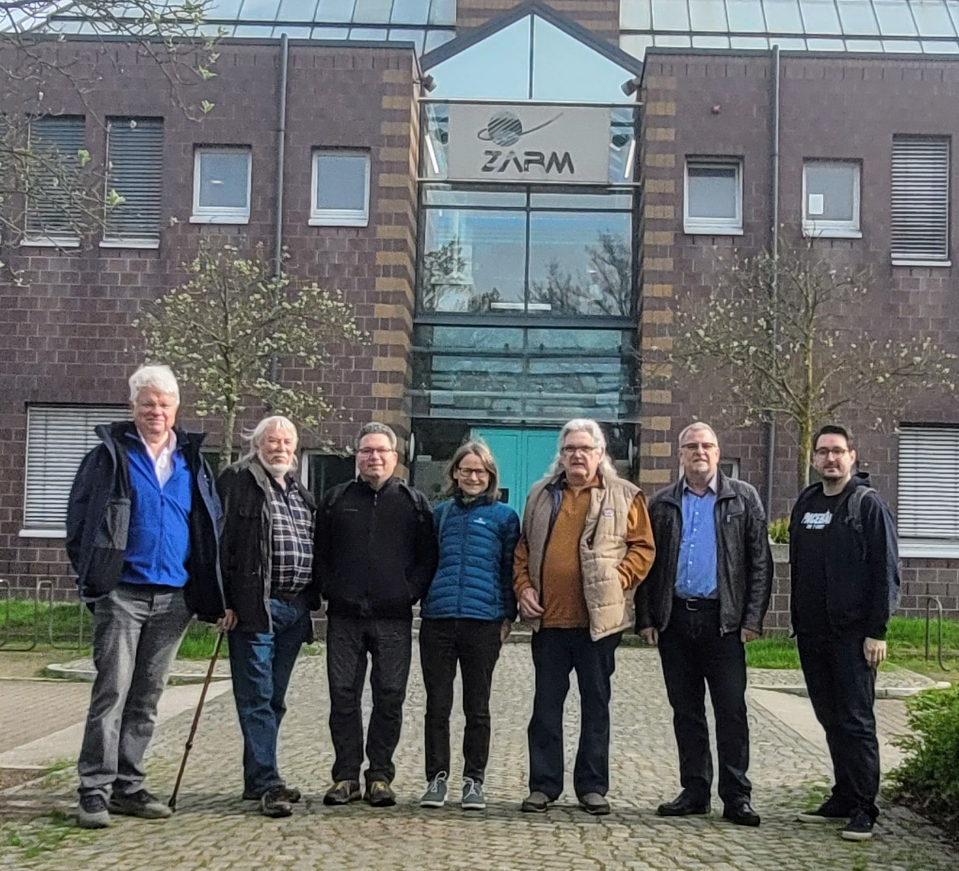
The ZARM is part of the University of Bremen and deals with fluid mechanics, space science and space technologies and, through independent research groups, also with space exploration.
Our visit started with a presentation of ZARM, in which the basic structure of the system and its components and the technology of the drop tower were explained. The interesting lecture was supplemented by vivid experiments and the opportunity to ask questions.
The centrepiece of ZARM is the drop tower, which was completed in 1990 and is unique in the world with a height of 146 metres.
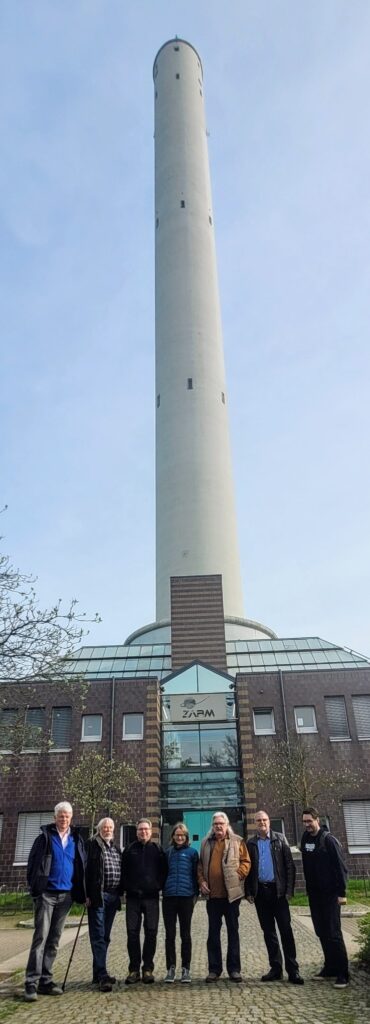
The drop tower building, which is visible from the outside and has an outer diameter of eight meters, represents the envelopment of the actual drop tube, in which microgravity experiments are carried out. Microgravity is the state in which weightlessness is present and which is realized in the drop tube by free fall (in fact, 1 millionth (10-6) of the acceleration of gravity is reached)
With a diameter of 3.5 meters and a length of 120 meters, the drop tube itself enables a free fall of the examination capsule of 110 meters, corresponding to 4.7 seconds in a state of microgravity during a fall experiment. In 2004, however, a catapult was installed in the base of the drop tower that accelerates the investigation capsule from below in such a way that it almost doubles the duration of the "free fall" – resulting in a weightlessness duration of 9.3 seconds in catapult experiments. However, the capsule, which weighs up to 500 kg and houses the experiments, would be slowed down in the drop tube by existing air molecules – a vacuum is needed. Therefore, before each drop experiment, the entire drop tube with a volume of 1700 m3 is evacuated and thus brought to a pressure of 10 Pa (0.1 mbar = medium (fine) vacuum).
This evacuation is carried out by 18 pumps and takes between 90 and 120 minutes. Thus, the evacuation of the drop tube is the most time-consuming factor in the execution of the experiments, which are thus limited to two to a maximum of three runs per day. The falling capsule is then caught at the base of the drop tube (brake chamber) by a 15 m3 large 8.2 m high container filled with polysterene spheres. Since this brake container would be in the way when the catapult is used, the entire container must be swiveled to the side when the capsule is launched, but then brought directly under the tube within the flight time so that the capsule with its speeds of up to 168 km/h is safely caught in the brake container. For this purpose, a pendulum system has been developed that makes this possible.
After the presentation, we went past various experiment setups (also one to simulate a Mars base) to the GraviTower (an additional smaller (16 m) drop tower, which works without vacuum and therefore allows up to 20 experiments/h), through the integration hall into the brake chamber of the drop tower. The integration hall is used to equip the drop capsule with the corresponding experiments and was not allowed to be photographed for understandable reasons. In the brake hall, however, the technology could be "grasped" and photographed – we were all fascinated by the technology and the dimensions of this system!
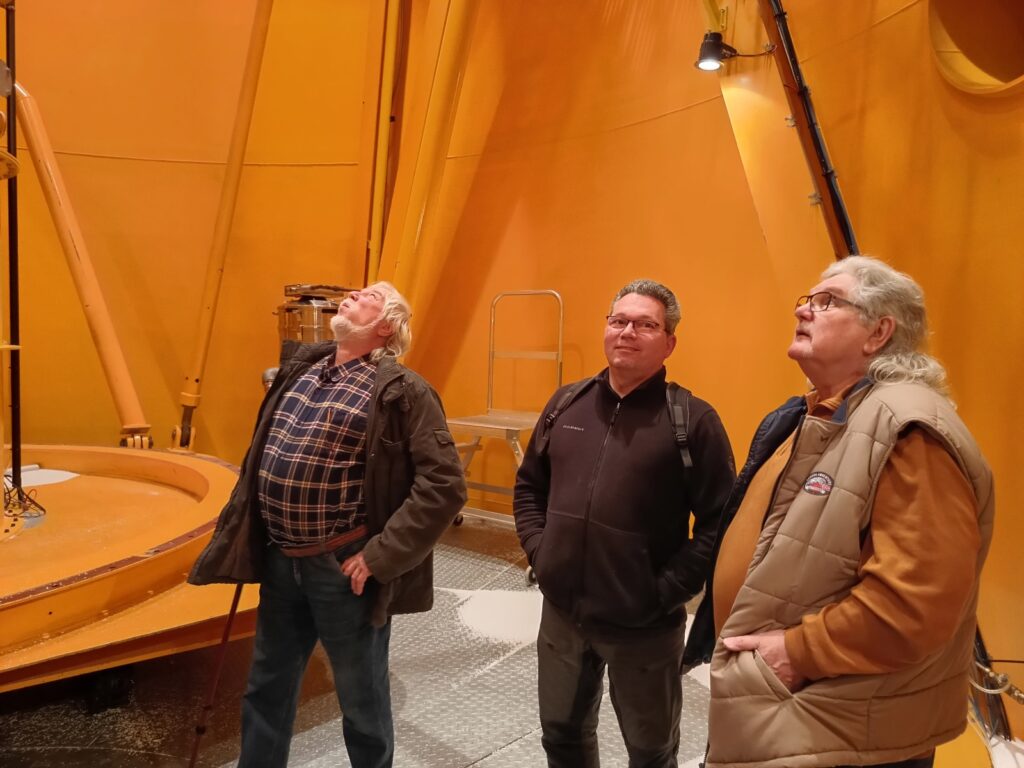
Impressed glances up into the drop tube
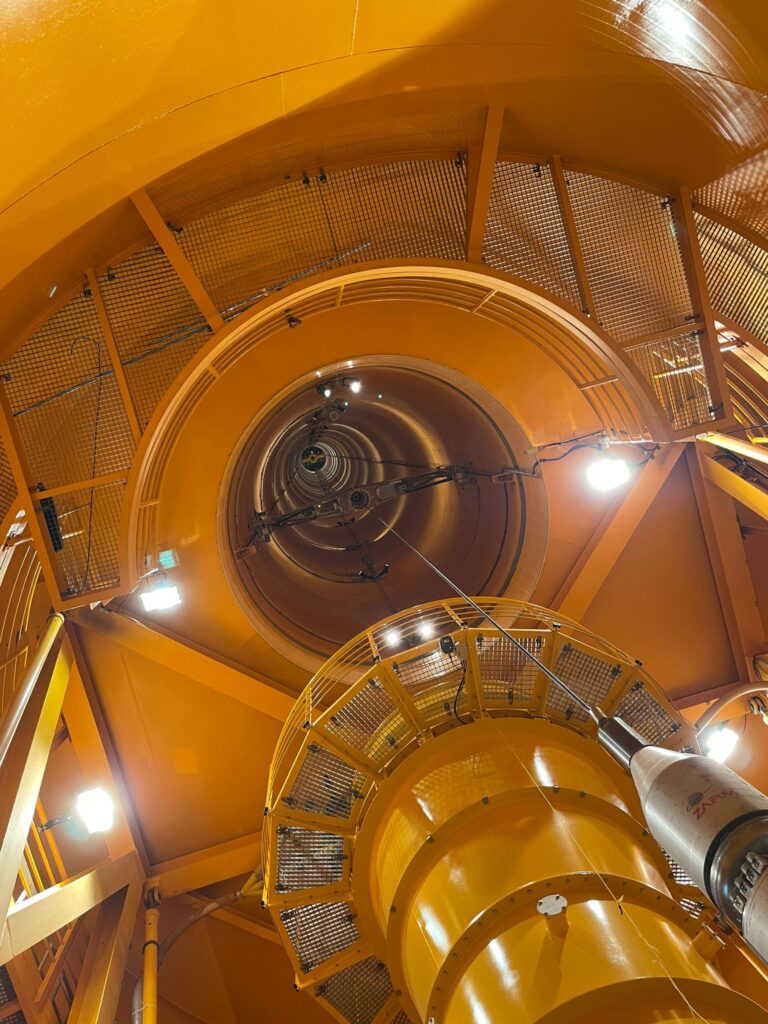
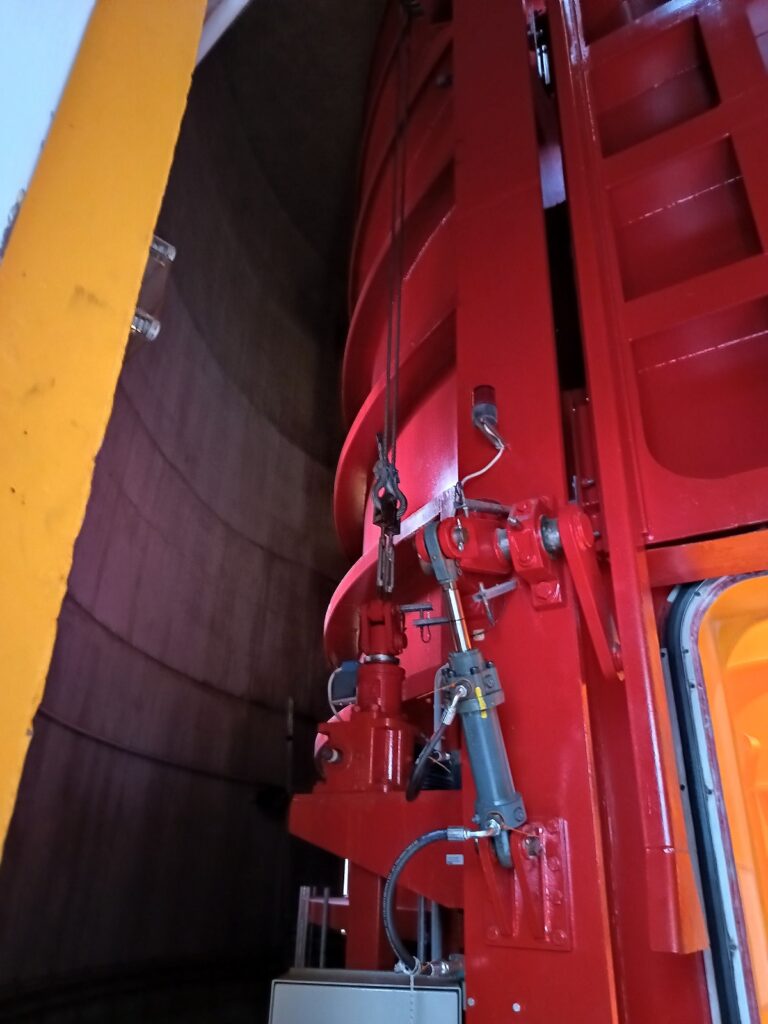

The queue for experiments in the drop tower is long – the tower is scheduled for two years in advance. Apparently, the study of phenomena under the conditions of microgravity is in demand in many areas – including: materials science, process engineering, fluid mechanics, but also biology, biotechnology and medicine.
The Universum® Bremen
The architecture of Universum® Bremen alone is worth seeing. Viewed from the outside, the building depicts a whale rising from the water. Inside, you can marvel at and understand scientific phenomena from the fields of technology, man and nature at over 300 exhibits. Of course, you have to spend some mind energy on this.
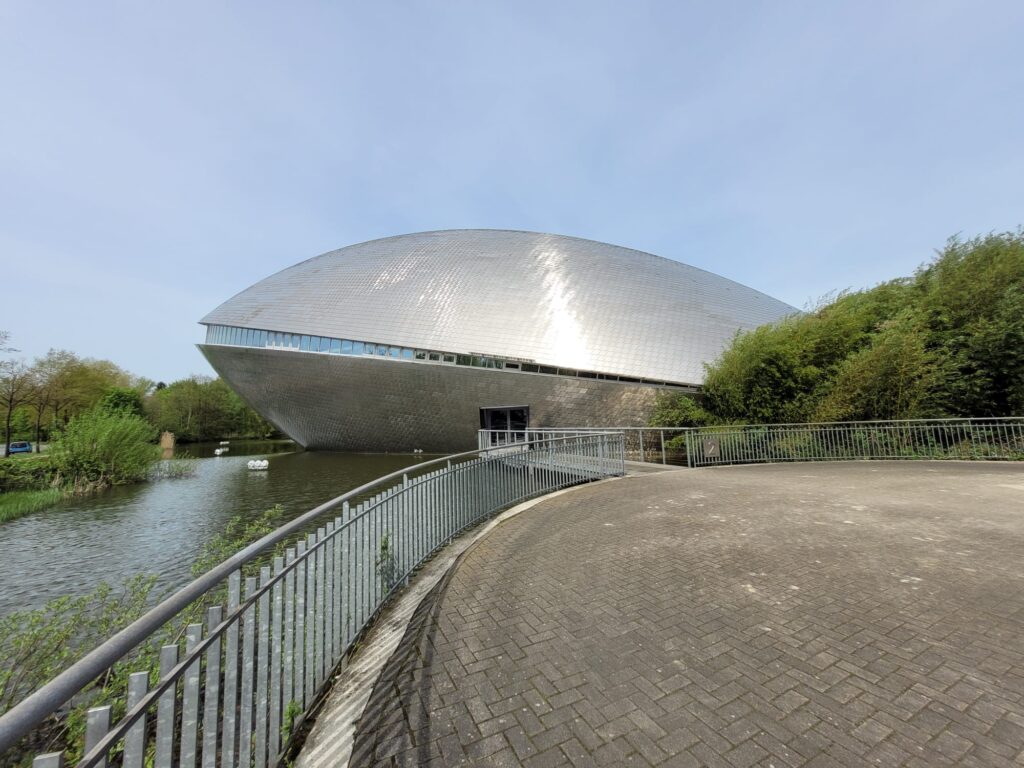
Although there was no explicit topic of astronomy, the points of contact were many. After all, astronomy has long since ceased to be astrology, but is deeply rooted in the natural sciences.
A small selection of experiments/exhibits related to astronomy:
- 1. Flattening by rotation: https://universum-bremen.de/abgeflachte-erde/
In the rotation of a sphere, the centrifugal force is greater at the equator than at the poles. Our earth has also flattened out somewhat. This effect can be observed in space with a large number of rotating systems - rotational ellipsoids.
- 2. Fluorescence https://universum-bremen.de/fluoreszenz/, https://www.scinexx.de/news/biowissen/fluoreszenz-als-indiz-fuer-ausserirdisches-leben/
If matter is exposed to high-energy (particle) radiation and immediately afterwards emits light of a different wavelength, it is called fluorescence. It is a mechanism used by certain organisms on Earth to protect themselves against excessive UV radiation. It may be possible to detect life on other planets in the future.
Aurora Borealis is another example of fluorescence. - Cloud Chamber: https://universum-bremen.de/nebelkammer/, https://de.wikipedia.org/wiki/Nebelkammer
In the cloud chamber, ionizing ponds, for which we have no sensory organ, become visible as thin traces of fog. In the supersaturated alcohol vapor atmosphere of the chamber, they act like condensation nuclei. Many of these particles originate directly or indirectly from space radiation.
There was much more, such as Light table, Fluids on spherical surfaces, Infinite gears and so on and so on... At some point, there was no longer enough time. We were very impressed by how vividly and literally comprehensibly everything was presented.

With a trouble-free return trip to Osnabrück, an eventful excursion came to an end. Up in the sky it had been sunny all day, albeit with many veil clouds. In the early evening, however, it was supposed to overcast again, which should have made us astronomers sad. But after all the interesting things of the day, we didn't bother.